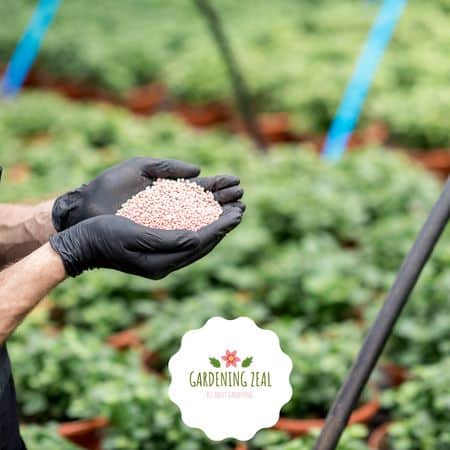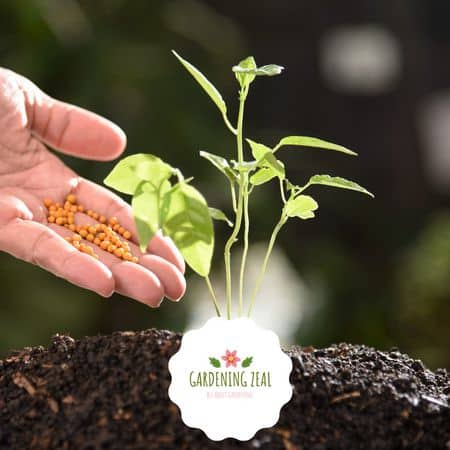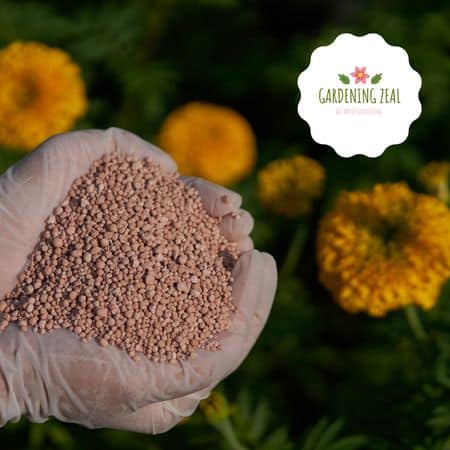Fall fertilization of lawns prepares the ground for the next season and makes it lush. Lawns are often stressed or nutritionally depleted in hot summer that becomes visible as bald patches and less appealing sights.
Applying fertilizers in the fall prepares the ground for the next season and adds value to increase the curb appeal of your lawn. So, here is everything about fall fertilization!
You will also get all the necessary information that will help to nurture your lawn nicely, including fertilizer timing and quantity.
So, don’t stop and keep reading!

Key Learning Points
When to Fertilize Lawn in Fall?
Early fall is the best time to fertilize your lawn and prepare it for the harsh weather. But when fertilizing the lawn in the fall is one of the most critical factors for a healthy lawn.
After summers, the grass is damaged a lot by extreme heat. This is the time when it proceeds towards regaining its strength.
Adding fertilizers just as the grass has started to recover will improve the health of the grass.
Adding fertilizers will give your lawn the essential nutrients it needs to grow. Adding fertilizers at the beginning of the fall when the ground temperature is not very high will prevent the grass from yellowing.
What is the Best Time to Fertilize the Lawn?
Apart from the season, part of the day you should fertilize your lawn is also very important. Generally, it is advised that you should fertilize your lawn only in the late afternoon and evening.
During the day, the temperature of the soil is very high, and adding fertilizer can burn the grass. Also, fertilizers should be added to slightly damp soil.
So, afternoon and evening is the only time when the ground is not very hot or wet.
You should not fertilize the lawn when wet because it can damage the grass.
Fertilizer sticks to the tips of the grass and burns it. Therefore it should be added to slightly moist soil to absorb properly.
How to Fertilize Lawn in Fall – Step-by-Step
Now that you know when to fertilize the lawn in the fall, it is vital to understand how to add fertilizers to your ground. Following are some essential points to keep in mind when planning to fertilize your lawn:
- Read the application instructions on the fertilizer bag before feeding.Ingredients and their formulations never remain the same, and they keep changing. So even if it’s the 100th time you are using the same fertilizer for your plant, don’t forget to read the instructions. This can save your lawn from any harm.
- Make sure the soil is a little moist before the feeding session. It helps the food to absorb better in the ground. Don’t water just before fertilizing; it can make the food grains stick to the tips and bur them. Also, there shouldn’t be any rainfall after the session for almost 24-48 hours. Rain washes away all the food.
- Choose a spreader to apply fertilizer. It aids in evenly distributing the food in the soil.
- Before adding fertilizers, ensure that your yard is clean from fallen leaves or other products. Leaves resist the even distribution of the fertilizer, so it is necessary to remove it first.
- Spread the food slowly, so there is no area left unfertilized.
How Frequently Should You Fertilize Lawn in Fall?
Not only you should know when to fertilize the lawn in the fall, but the time interval is also essential.
Fertilizing your lawn will help it to grow healthier, but over-fertilizing can negatively affect the growth of your grass. Generally, it is recommended that you should only feed your grass 2-3 times during the months of fall.
Your lawn needs nutrients when it is in the growing stage. You should feed it every 6-8 weeks for better results. But you can always skip this step once the grass gets thick and green.
The duration you fertilize the lawn depends on your area’s weather conditions. If the winter season lasts longer in your area, you can increase the fertilizing sessions.

5 Benefits of Fall Fertilization of Lawns
Like everything else, fertilizing your lawn costs money as well as time. You may want to know whether it is worthy of your investments. It is crucial to know the results of something before investing.
Here we have gathered some of the many benefits of adding fertilizers to your lawn:
1. Improves Growth
A healthy and lush green lawn is beautiful. But sometimes, grass at one part is carpeted while there is less or no grass on the other part of the lawn. It feels very unpleasant to walk on uneven grass.
Due to the lack of nutrients in different soil areas, there is less grass in some parts of the lawn.
Adding fertilizers fulfills the soil’s nutrient needs, resulting in smoother and healthier grass all over the lawn area.
2. Reduces Pest
An unhealthy lawn is a significant reason for the pest attack. They attack areas that are already weak. Fertilizers contain insecticides that prevent the pests from attacking and damaging the grass.
Even if the fertilizer you use does not have insecticides, it still protects the lawn. This is because fertilizers grow thick and healthy grass, and pests can’t grow there.
3. Lowers the Chance of Diseases
Grass having weak roots has a greater chance of becoming prey to diseases. Sometimes a whole patch of grass burns suddenly, or it starts yellowing.
This clearly signifies that your lawn is not getting enough nutrients or a proper growth environment.
Adding fertilizers can help your yard to regain its strength and improve its health.
4. Protects the Soil
Soil is vital for the growth of grass. But as the grass grows, it needs more nutrients and minerals, which it takes from the soil in which it is planted. It reduces nutrients in the soil, affecting its quality.
Mixing fertilizers will keep the nutrient level balance.
Also, heavy rain and storms can blow away soil and essential nutrients if the grass is not thick. Providing proper fertilizers to your lawn will result in a healthy and thick layer of grass.
This will protect the soil during heavy rain.
5. Consistent Flow of Nitrogen
Fall fertilization is the best way of giving the grass a head start for next spring. Your lawn will have the perfect time to green up because fertilization in fall prepares grass by providing a consistent flow of nitrogen.

FAQS – Fall Fertilization of Lawns
What is the Best Lawn Fertilizer Ratio for Fall?
Nitrogen, Phosphorus, and Potassium are the three main components of fertilizer. For the best results, use a fertilizer that has 3:1:3 ratios of these substances. This is the amount for an ideal situation.
Different areas have different soil types and fertilizer needs. You can determine a proper ratio for your lawn by taking a soil test.
What is the Best Fertilizer for Lawns in Fall and Why?
The best fertilizer to feed your lawn should have a higher percentage of nitrogen. Nitrogen is responsible for green and healthy plants.
A 20-8-8 fertilizer contains 20% nitrogen in it. In winters, however, you should use the one with a higher percentage of Potassium.
It strengthens the walls of the plants by creating thick cell walls. This helps the plant to bear the harsh winter season.
What is the Importance of Fall Fertilization for Trees?
Like grass and other small plants, trees also need nourishment to grow faster and healthier. As trees grow in size, they absorb more nutrients from the soil, which lowers the level of nutrients in the soil. Fall is the best time to fertilize them.
Trees should be fertilized at the beginning of the fall season. Leaves decompose and fulfill the supply of nutrients, but they are removed for regrowth of the fresh ones in the fall.
This is when they don’t have any nutrient source and need added fertilizers.
Conclusion – Fall Fertilization of Lawns
Fall fertilization can prove the quickest way to boost soil nutrients that, in return, give healthy growth. All you need is to fertilize your lawn at the right time and in the right balance of nutrients.
Remember, exceeding the nutritional value can also burn your grass.
So, carefully follow everything discussed in the article and prepare your lawn for the next growing season.
Leave a Reply